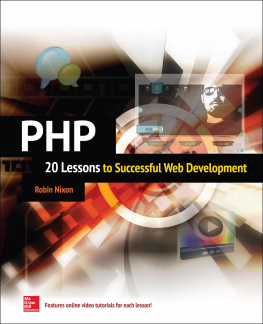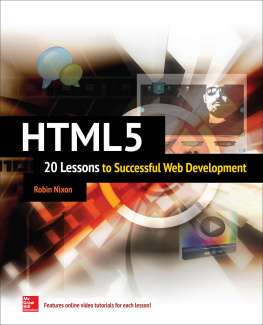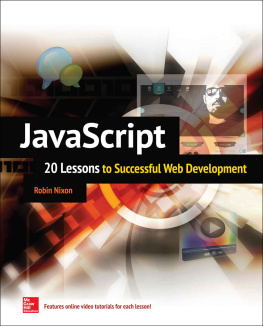Robin Nixon [Robin Nixon] - CSS & CSS3: 20 Lessons to Successful Web Development: 20 Lessons to Successful Web Development [ENHANCED EBOOK]
Here you can read online Robin Nixon [Robin Nixon] - CSS & CSS3: 20 Lessons to Successful Web Development: 20 Lessons to Successful Web Development [ENHANCED EBOOK] full text of the book (entire story) in english for free. Download pdf and epub, get meaning, cover and reviews about this ebook. year: 2015, publisher: McGraw-Hill Education, genre: Home and family. Description of the work, (preface) as well as reviews are available. Best literature library LitArk.com created for fans of good reading and offers a wide selection of genres:
Romance novel
Science fiction
Adventure
Detective
Science
History
Home and family
Prose
Art
Politics
Computer
Non-fiction
Religion
Business
Children
Humor
Choose a favorite category and find really read worthwhile books. Enjoy immersion in the world of imagination, feel the emotions of the characters or learn something new for yourself, make an fascinating discovery.
- Book:CSS & CSS3: 20 Lessons to Successful Web Development: 20 Lessons to Successful Web Development [ENHANCED EBOOK]
- Author:
- Publisher:McGraw-Hill Education
- Genre:
- Year:2015
- Rating:3 / 5
- Favourites:Add to favourites
- Your mark:
CSS & CSS3: 20 Lessons to Successful Web Development: 20 Lessons to Successful Web Development [ENHANCED EBOOK]: summary, description and annotation
We offer to read an annotation, description, summary or preface (depends on what the author of the book "CSS & CSS3: 20 Lessons to Successful Web Development: 20 Lessons to Successful Web Development [ENHANCED EBOOK]" wrote himself). If you haven't found the necessary information about the book — write in the comments, we will try to find it.
CSS & CSS3: 20 Lessons to Successful Web Development provides easy-to-follow lessons that use text, sample exercises, and video for the entry-level CSS programmer. Each lesson is designed to take you less than an hour to complete. All the basics of CSS through to more advanced features like adding dynamic effects, animation, transitions, and web fonts are covered. This practical guide also introduces just enough of the additional technologies and techniqueslike HTML and JavaScriptneeded to complete the lessons.
- One-hour lessons teach practical techniques that can be applied immediately
- Wrap ups contain a summary, tips for further study, and self-test questions
- Online video accompanying each lesson offer valuable, step-by-step instruction
**
From the AuthorBased on my hugely successful Internet video courses, in this series of books I have split each subject covered into a series of 20 self-contained lessons. Each one should take you no longer than an hour to complete, and there is a set of ten questions at the end of every lesson (with answers at the back of the book) so that you can test whether you have learned the essentials covered in that lesson.
Fully tested and working examples are used throughout, so you can clearly see how the technologies work, and either type them in or download them for free from 20lessons.com, so you can try them out for yourself, and play with them too. On top of that I also produced an instruction video for every lesson, taking you through all the topics in the lesson, and describing the examples and how they work from start to finish - instructions on how to view them are given in each chapter.
By combining all these methods (text, examples, Q&As, and video) you can be sure that the knowledge you need to know is quickly acquired, and you will gain a clear overview from different angles, ensuring that you know how to apply this knowledge in the real world.
About the AuthorRobin Nixon is an experienced web developer, author, and teacher, with over 30 years experience. He has written more than 500 articles and almost 30 books, including The Web Developers Cookbook, HTML5 for iOS and Android: A Beginners Guide, Plug-In CSS, Plug-In JavaScript, and Plug-In PHP.
Robin Nixon [Robin Nixon]: author's other books
Who wrote CSS & CSS3: 20 Lessons to Successful Web Development: 20 Lessons to Successful Web Development [ENHANCED EBOOK]? Find out the surname, the name of the author of the book and a list of all author's works by series.

![Robin Nixon [Robin Nixon] CSS & CSS3: 20 Lessons to Successful Web Development: 20 Lessons to Successful Web Development [ENHANCED EBOOK]](/uploads/posts/book/119139/thumbs/robin-nixon-robin-nixon-css-css3-20-lessons.jpg)
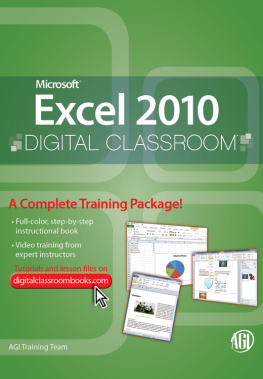


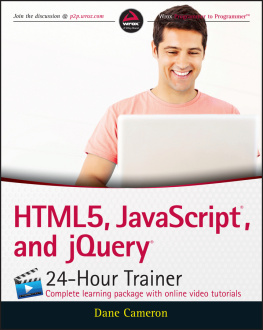
![Julie C. Meloni [Julie C. Meloni] - HTML and CSS in 24 Hours, Sams Teach Yourself (Updated for HTML5 and CSS3) (9th Edition) (Sams Teach Yourself in 24 Hours)](/uploads/posts/book/119155/thumbs/julie-c-meloni-julie-c-meloni-html-and-css-in.jpg)
